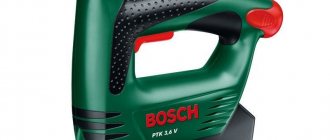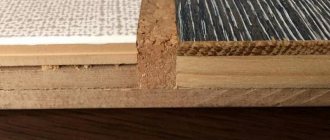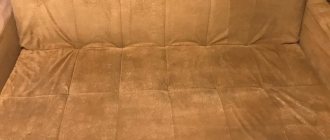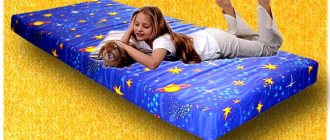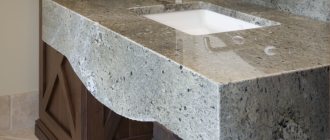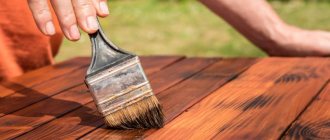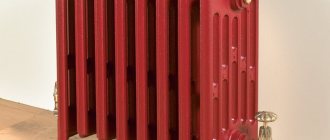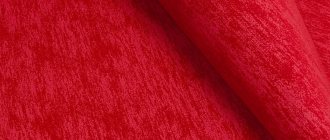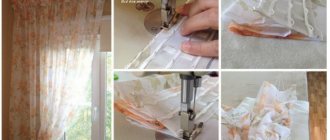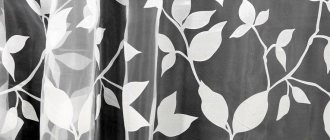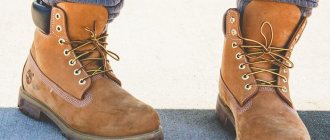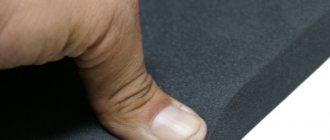Today, scientists working on the production of new textile materials have developed a lot of soft, velvety fabric used in furniture production for upholstering chairs, armchairs and sofas. Due to its unique qualities, simplicity of the technological process and low cost, flock occupies a special place among finishing fabrics.
Initially, flock production used waste remaining after processing wool, cotton and synthetic threads. Translated from English, flock means “fluff”, “cloud”. The fabric with such a short name is a material densely covered with tiny fibers.
How it's made
Flock is a pile. From English it can be translated as “shred”, “fluff”. The technology for making the material comes from China. Flocking, as this method is called, is gluing scraps of wool or cotton (production waste) onto a resin base. The result is a very dense fabric with a soft texture, reminiscent of velor in appearance. They are often confused. But unlike velor, flock is a non-woven fabric. Chinese craftsmen hid their production secrets for a long time. Flock began his victorious march around the world only in the twentieth century. The low cost and high performance qualities were quickly appreciated, and flock began to be produced on an industrial scale, finding various applications for it.
The flocking process, from which the material gets its name, consists of several stages:
- Production waste and raw materials are ground or very finely chopped.
- They are painted, this can be done before cutting. When dyed, flock acquires additional qualities: moisture resistance, resistance to ultraviolet rays, resistance to chemical compounds.
- The fibers are impregnated with electrolyte, this is called lint activation. It is necessary so that the fibers lie evenly on the base.
- The base is coated with an adhesive composition, this process is called spraying.
- The canvas is fixed with a special compound, giving it attractiveness and functionality.
For greater strength, the pile is applied in two layers. Of course, the process is automated, and production technology has changed since ancient times, allowing the production of flock on an industrial scale. And it deserves it, since flock fabric has a dense base and resistance to all kinds of external influences. In addition, the fabric is pleasant to the touch.
Color spectrum
Flock is easy to paint, so upholstery for a sofa can have various solutions. Bright material with drawings is suitable for children's rooms. Classic options that can be used in the bedroom and living room are white and beige. The brown flock sofa looks noble.
Photo: Flock fabric for sofasThe accent of the interior can be a blue or green flock sofa. In this case, it is recommended to complement the interior with another element of a similar color. The same applies to colors such as red, orange, purple, etc.
Which is better: flock, velor or matting
Velor is in many ways similar to flock, but it is more expensive. This is a soft and pleasant material that makes it possible to create a warm and cozy place in the house. The material has a natural base, pleasant appearance, and velvety texture. The color range of velor sofas can be very wide. The material is highly durable and has good ventilation. It is thermally resistant and provides thermal comfort. Velor also cleans well and has the following positive features:
- environmental friendliness. Velor is a material of natural origin;
- thermal conductivity. The upholstery fabric itself is warm and retains temperature well;
- strength. Over time, the material will not sag or stretch;
- softness. The material is pleasant to use;
- ventilation. Thanks to good air exchange, the hygiene of the fabric is ensured;
- ease of use. Velor can be cleaned with various means.
Matting is a material with a fine texture. Most often the fabric is plain. It is distinguished by coarse weaving, fairly thick fiber and high strength. The fabric is elastic, which means it will not wrinkle throughout the day and will retain its shape for a long time.
Caring for the matting is quite simple. It does not require the use of special powders and solutions.
Photo: Flock sofas
If we compare velor and flock, the first is distinguished by its chic, presentable appearance, the second by its practicality and more affordable cost. Velor is suitable for luxurious living rooms in classic styles. But it won’t fit into a high-tech or loft style design. It is also not the best option for homes with small children or animals.
A flock sofa is more democratic. It withstands difficult conditions better, is easier to clean, is comfortable and roomy. The only room where you should not use it is the kitchen. The material absorbs odors well, and in the future it will be extremely difficult to remove them.
The matting resembles burlap and does not look as luxurious as velor or even flock. Such a sofa can also look very stylish, provided that it is combined with the overall style of interior design. It can be used in country, loft, Provence styles and so on. This is an inexpensive and practical material that, with proper care, will serve you for a long time.
Video: How to clean a flock sofa
Thus, the choice of material for upholstery of a sofa should be made taking into account the general style of the interior, financial capabilities and operating conditions. Flock represents a kind of golden mean: it is inexpensive and pleasingly practical, and at the same time looks quite stylish and presentable.
I like
SofasRelated articles:
Production
Flock production
The technology of flock production is very interesting. The woven base, which moves slowly along the machine, is treated with a special adhesive. Above the machine there is a hopper that throws out electrified fluff particles. Due to electrical conductivity, the fibers fall onto the adhesive base strictly vertically and very close to each other, which ensures uniform coverage.
The length of the fibers and the tightness of their fit determines what kind of fabric will turn out, soft or hard. A high-quality material should have a straight pile, equal in length, densely packed, and the ends of the fibers should not be fused together.
The pile can be ground or cut. In the first case, the fibers are ground in a special device. The fibers have different lengths, and the flock turns out to be similar to suede. In the second case, the fibers are folded into bundles and cut evenly, resulting in the fibers having the same length.
You can also dye flock in two ways: before and after cutting the threads. The technological process is completed by treating the flock with a special protective compound, which adds shine and improves the characteristics of the material.
Advantages and disadvantages
Advantages of this fabric:
- Density and strength. Flock products are difficult to damage.
- Moisture resistance. The liquid collects on the surface into drops and penetrates slowly through the material.
- Breathability.
- Wear resistance. The fabric does not stretch, does not shrink, does not fray, and wears out slowly.
- Heat resistance. Temperature changes do not affect the canvas.
- Softness and attractive appearance.
- Large color palette (does not apply to all types).
- Easy care and cleaning.
Disadvantages of flock:
- Electrification. The fabric attracts dust and debris.
- Instability to alcohol-containing products.
- Easy creasing of some types (viscose and acetate flock).
This material can last a long time; the main thing is to choose a quality product and care for it properly.
Disadvantages of flock sofa upholstery
The positive aspects listed above are found mainly on expensive products. If the quality is not at a high enough level, then you may encounter some disadvantages, which include:
- If inexpensive technical glue is used in production, then during operation chemicals harmful to health .
- A significant disadvantage is the tendency to electrify . Therefore, the sofa can become a real dust collector, attracting small debris. People prone to allergies should avoid this type of coating.
- If the resulting stains are not removed immediately, then after they dry, it is very difficult to get rid . In addition, strong friction can easily damage the soft surface, resulting in noticeable bald spots.
- The next disadvantage is the tendency to absorb various odors . Therefore, such furniture is definitely not suitable for a small kitchen.
- A person who spends a long time on such a surface may sweat . Flock is not a breathable material, so discomfort may occur. This is especially noticeable on hot summer days, which is not very pleasant.
Bottom line
Knowing the positive and negative sides will help you make the right choice. If you still want to buy a sofa with such upholstery, you should not save. Not only will it quickly become unusable, but it can also cause harm to health due to low-quality components. It is better to contact trusted manufacturers who definitely do not raise doubts. In this case, with proper care, the purchase will not bring disappointment, but will become a wonderful addition to the room and will be pleasing to the eye.
Sources used:
- https://poztello.ru/divany/135-iz-floka.html
- https://plusiminusi.ru/obivka-divana-flok-plyusy-i-minusy/
How is it different from other similar fabrics?
Flock is far from the only fabric used for furniture upholstery. Along with it, fabrics such as chenille and matting are widely used. However, there are still differences between these materials:
- chenille does not have pile, which tends to wrinkle and wear off, making the fabric more durable;
Chenille upholstery
- matting is the strongest fabric, tactilely loose and not as pleasant as flock, but at the same time it can serve for a very long time;
You might be interested in this All about teak fabric: what such materials are made of
Matting upholstery
- flock is the most beautiful and soft, moreover, most of its types have an excellent ability to repel moisture, which other fabrics cannot boast of (chenille and matting absorb it instantly).
The choice of fabric directly depends on the purpose of use and the desired qualities.
Tips for choosing
What is the best fabric to use for upholstery? It is possible to choose different types of materials, but certain criteria are taken into account:
- ease of cleansing;
- resistance to moisture, ultraviolet radiation, abrasion and other exposure factors;
- long service life;
- attractiveness;
- matching the color and texture to a specific interior style.
With the right choice of upholstery, it ensures an attractive and bright piece of furniture. It will fit well into the existing style and will also suit the tastes of the users.
Reviews
Elena:
10 years ago we ordered a sofa. We chose flock upholstery, made in Canada, we are very pleased, during this time the material has remained virtually unchanged. We vacuum about once a month and that’s it. The pile is practically not wrinkled, there are no bald spots.
Marina:
In our kitchen we have a corner sofa with flock upholstery. I really like it: I washed the stains with a soap solution (diluted with dishwashing detergent) and a sponge. The child spilled the compote, they wiped it off so quickly with a towel, it didn’t even have time to soak in!
Sergey:
We bought upholstered furniture. Our little child drew on the chair with felt-tip pens, my wife immediately wiped it off with baby wipes and there was no trace left!
Elena:
We chose furniture so that the cat could not scratch. The consultant recommended flock. Well, it’s been holding on for six months already, the cat can’t get her claws in and has lost interest, until we’re disappointed.
